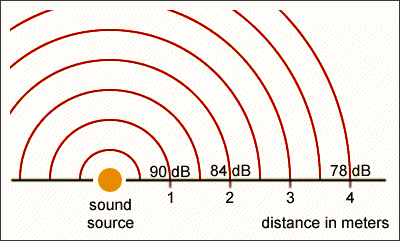
Bob Simonson, Program Leader |
||

San Dimas Technology
& Development Center
444 E Bonita Ave
San Dimas, CA 91773
(909) 599-1267
![]() Sound Measurements of Helicopters During Logging Operations
Sound Measurements of Helicopters During Logging Operations
|
Robin T. Harrison, P.E.
This report presents the results of a study conducted to assess the acoustic signatures of two logging helicopters during logging operations. The intent of the study was to determine the horizontal distance to the 92 dBA (slow) level contour around helicopters performing logging operations. The U.S. Department of the Interior, Fish and Wildlife Service's Western Washington Office considers the 92 dBA level as the injury threshold for northern spotted owls and marbled murrelets (both listed as threatened species under the Endangered Species Act) (USFWS 2003). This study was limited to physical measurements of helicopter sound. No inquiry into whether or not 92 dBA is an appropriate level for sensitive wildlife species was made. This study does not discuss measures for abating helicopter noise through physical (design) changes to the helicopter or the operation of the helicopter. Research and investigations by others to identify methods for reducing helicopter noise, especially in the urban setting is ongoing. These studies investigate methods to reduce blade-vortex interaction (blade slap) noise, to manage flight trajectory, and to modify the design of rotor blades. Readers interested in information on potential helicopter operation or design changes should review Edwards and Cox (2002) or Gopalan (2004). |
||||||||||||||||
| Since sound level decreases the further you are from the source, increasing the distance of the receiver from the sound source is a reliable method to reduce sound levels. This attenuation of sound is due to the spherical spreading of the acoustical energy into the air from the point source (technically known as geometrical divergence). The attenuation of sound is known to decrease by 6 dB when doubling of the distance as shown below. (Also see Harris 1998; Piercy and Daigle 1998; ANSI 1994).
Although several other factors, such as humidity, temperature, wind, and atmospheric turbulence affect the attenuation of sound, distance from the source is the only variable that land managers can realistically (or reliably) control or manage during timber sale conditions. Furthermore, at distances less than 300 feet from the sound source, sound propagation is essentially independent of atmospheric conditions (Piercy and Daigle 1998). In fact, at distances less than several hundred meters from the source, the absorption of sound in air at a different temperature and humidity is negligible except for the very high frequencies (Piercy and Daigle 1998). (See appendix 5 for a more detailed discussion on the effects of humidity, temperature, and vegetation on sound propagation and attenuation.) As such, this study considers distance from the sound source as the most appropriate factor for controlling sound levels during helicopter logging operations. This study, therefore, focuses primarily on sound attenuation due to distance from the source. The metric used, dBA (slow), is the most commonly used sound level unit in research on the effects of sound. Slow response is appropriate since it represents an averaging time of approximately one second. This metric is short enough to effectively capture the actual maximum sound level at any given location, but long enough to exclude any extraneous peaks caused by random events. (Yeager and Marsh 1998). The study was conducted by Murphy & Harrison, Inc. under a contract administered by the San Dimas Technology and Development Center (SDTDC). SDTDC project leaders assisted in collecting and analyzing the data. |
|||||||||||||||||

